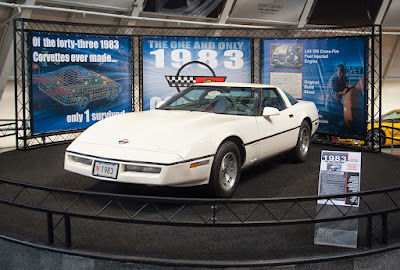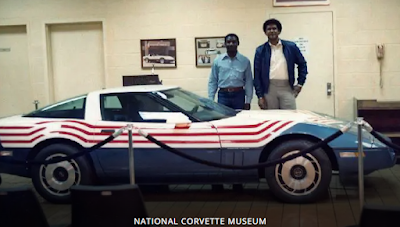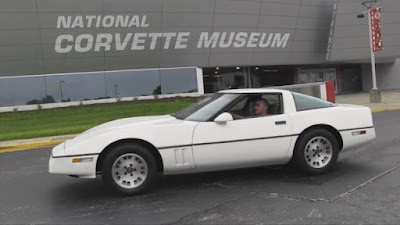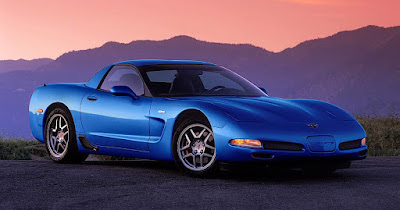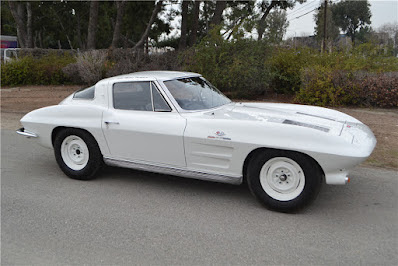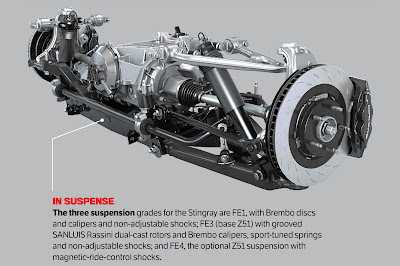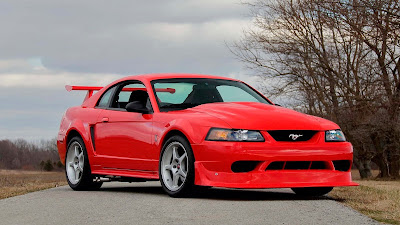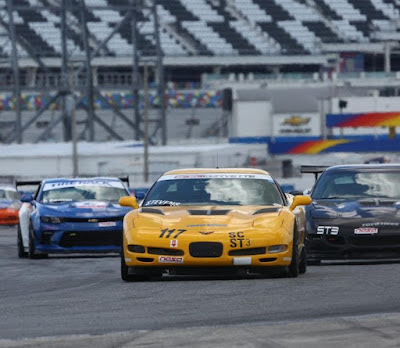Sunday, May 26, 2024, we will once again see a Corvette running laps as a pace car for the Indianapolis 500. But this won't be just any Corvette—it is Corvette's first all-new 2024 Corvette ELZ E-Rayall-new 2024 Corvette ELZ E-Ray.
This is Corvette's 21st time pacing the Indy 500 since 1978, more than any other car in history. If you add that up with all 35 appearances of Chevorlets that paced the event since 1948, Chevy is by far the leader for this honor.
How Does The E-Ray Corvette Stack Up To Its Syblines?
The Electric All-Wheel Drive (eAWD) E-Ray is the quickest production Corvette that has ever come off the assembly line at the Corvette Plant in Bowling Green, KY.
Using a 6.2-liter powerhouse V8 running6.2-liter powerhouse V8 running in tandem with an electric motor that adds an additional 160 horsepower and 125 lb.-ft. of torque to the front wheels, this Corvette is good for 655 combined horsepower.
What do these numbers mean while the Corvette is in motion? How about a 0-60 MPH time in just 2.5 seconds, and if you decide to keep the pedal to the metal, you'll cover the quarter-mile track in just 10.5 seconds. The E-Ray can also drive on its electric motor alone for up to 4 miles at 45 MPH when Stealth Mode is selected.
Who's Going To Be Driving The E-Ray Pace Car?
Piloting the E-Ray at the Indy 500 is going to a famous former MLB outfielder, All-Star, Ken Griffey Jr.All-Star, Ken Griffey Jr. If you haven't heard of this guy, even if you don't watch sport, you must have been living under a rock for the 35 years. All you have to do is punch his name into a search engine, and you'll see the mountain of awards and accomplishments he has made—Golden Glove Awards, All-Star awards, hitting awards, and more.
Here's A Run Down Of The Past Corvettes To Take The Indy Honor
1. May 26, 1978, the 62nd Annual Indianapolis 500 is the first time Corvette graces Indy fans with its presence. Driven by American race car driver Jim Rathmann.
3. May 28, 1995, the 79th running of the Indianapolis 500, brought to the stage one of the more colorful Corvette Pace Cars. This 1995 Corvette Pace Car version was raced equipped with a five-point safety harness, an onboard fire suppression system, a special "halo" roll-bar, and a special strobe light setup for more eye appeal. For this year the Corvette was driven by former Chevrolet Manager Jim Perkins.
10. May 25, 2008, the 92nd running of the Indianapolis 500 would see two pace cars for the first time. First, there was a 2008 Corvette Z06 engineered to run off of E85 Ethanol fuel. And then there was another pace car dressed in a black and silver color scheme to celebrate the anniversary of the first Corvette Indy 500 car that debuted 30 years earlier. These pace cars would be driven by celebrity race car driver Emerson Fittipaldi.
11. After a little break from the action, Corvette returns to Indy. May 27, 2012, the 96th running of the Indianapolis 500 saw its first 6th-generation ZR1. This car took Americans by storm with its supercar-like performance. Famous Emmy Award-winning television cook and personality received the honor of driving this LS9 powerhouse around the track—too bad he wasn't able to reach its top speed of 205 MPH at pace mode.
12. May 26, 2013, the 97th running of the Indy 500 brought onboard the all-new seventh-generation Corvette Stingray. San Francisco 49ers head coach, Jim Harbaugh was asked to take on the pace car duties for the year, he happily obliged.
13. May 24, 2015, the 99th running of the Indianapolis 500 would bring a superstar race car driver from NASCAR on board to pilot the 2015 Corvette Z06 Pace Car. Jeff Gordon won his first NASCAR race in Indianapolis before going on to become a legend in the sport. Although he won't be going as fast as he's used to on the track, this supercharged 550 horsepower sports car is certainly capable of high speeds.
14. May 28, 2017, was the first year where the Indy 500 Corvette Pace Car would not change much in the way of a color scheme from the year before, but the Vette was different. This year for the 101st running of the Indianapolis 500, Corvette debuted its new 2017 Corvette Grand Sport. Actor Jeffrey Dean Morgan seat behind the wheel and paced the Indy Car field around the famous track.
15. May 27, 2018, the 102nd Indianapolis 500 pace car would be another ZR1, but this 2019 Corvette ZR1 would boast 755 horsepower, get a 0-60 time of 2.85 seconds, and reach a top speed of 212 MPH. This powerful supercharged Corvette would be driven by Victor Oladipo, an Indiana University and Indiana Pacers basketball player.
16. May 26, 2019, the 103rd running of the Indianapolis 500 would see another 2019 version of the Corvette as a Pace Car. Following the previous year's '19 ZR1 pace car, the Corvette Grand Sport would take center stage for pace car duties. Getting to have some non-competitive fun on the track would be Dale Earnhardt Jr. pacing the Indy Car field.
17. On to the unveiling of the mid-engine Corvette. It was a long-time conversion in the makings, and that made it an obvious choice to become the official Pace Car for the 2020 Indianapolis 500. GM President Mark Reuss was honored to be the driver who got to pace the track for this Indy 500.
18. May 30, 2021, the 105th Inianaplos 500 adopts another mid-engine Corvette for pace car duties. Its white exterior color with yellow accents and black rims, makes the Corvette stand out. Chosen to take this beautiful ride around the track is the beautiful and most successful open-wheel racer in history, Danica Patrick.
19. May 29, 2022, this 106th running of the Indianapolis 500 would bring you a masterpiece 2023 Corvette Z06. This 70th-anniversary Vette was complemented with a naturally-aspirated flat-crank 5.5-liter V8. This sports car was a beast all of its own. Chosen to pilot this Corvette was former Indy Car driver and three-time podium-finisher Sarah Fisher.
20. May 28, 2023, Corvette paced the Indianapolis 500 with their first-ever convertible hard-top Z06first-ever convertible hard-top Z06. This badass-looking ride is something anyone can fall in love with. So who gets to drive this fine sports car on the big day? Tyrese Haliburton, an Indian Paces basketball point guard.






















